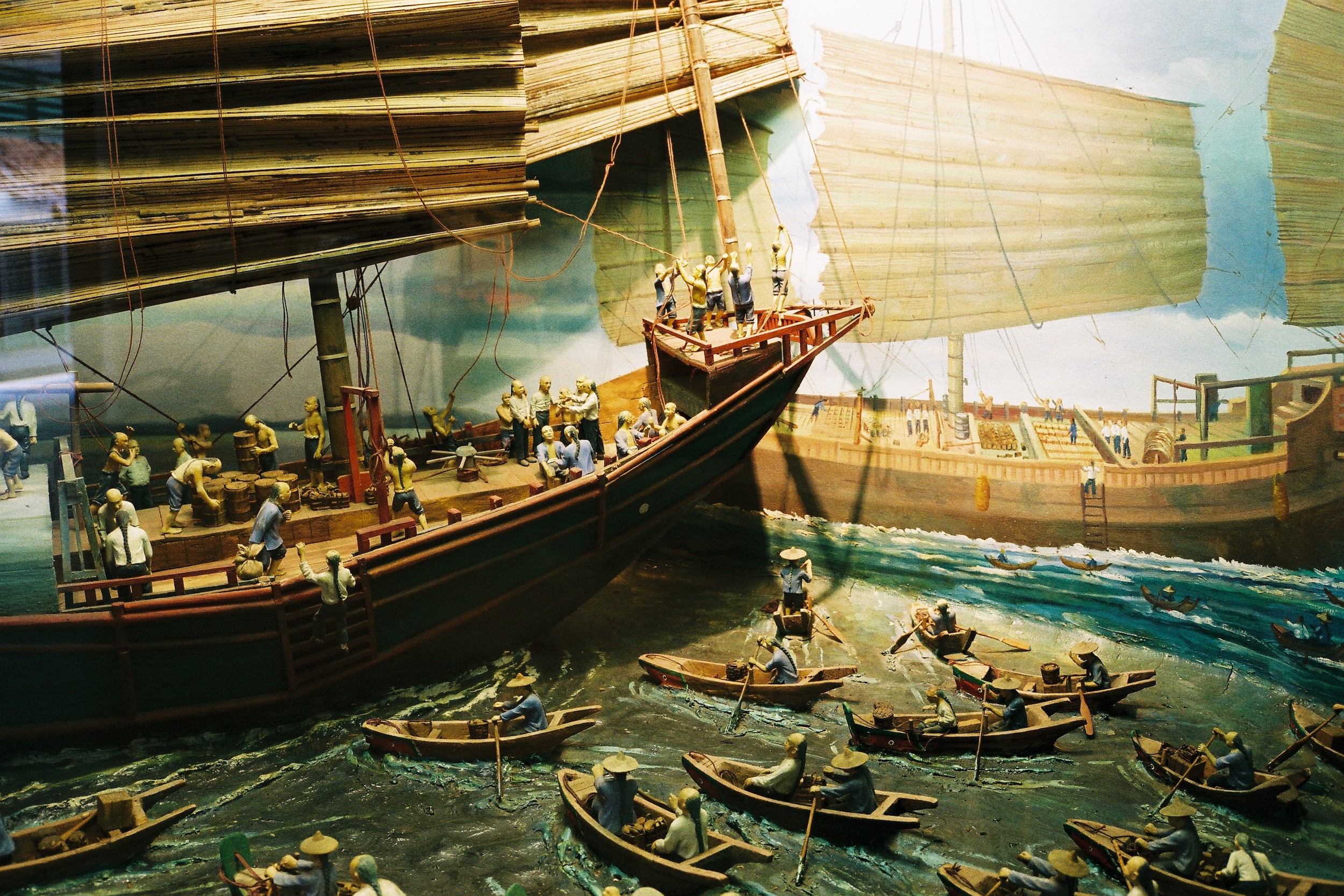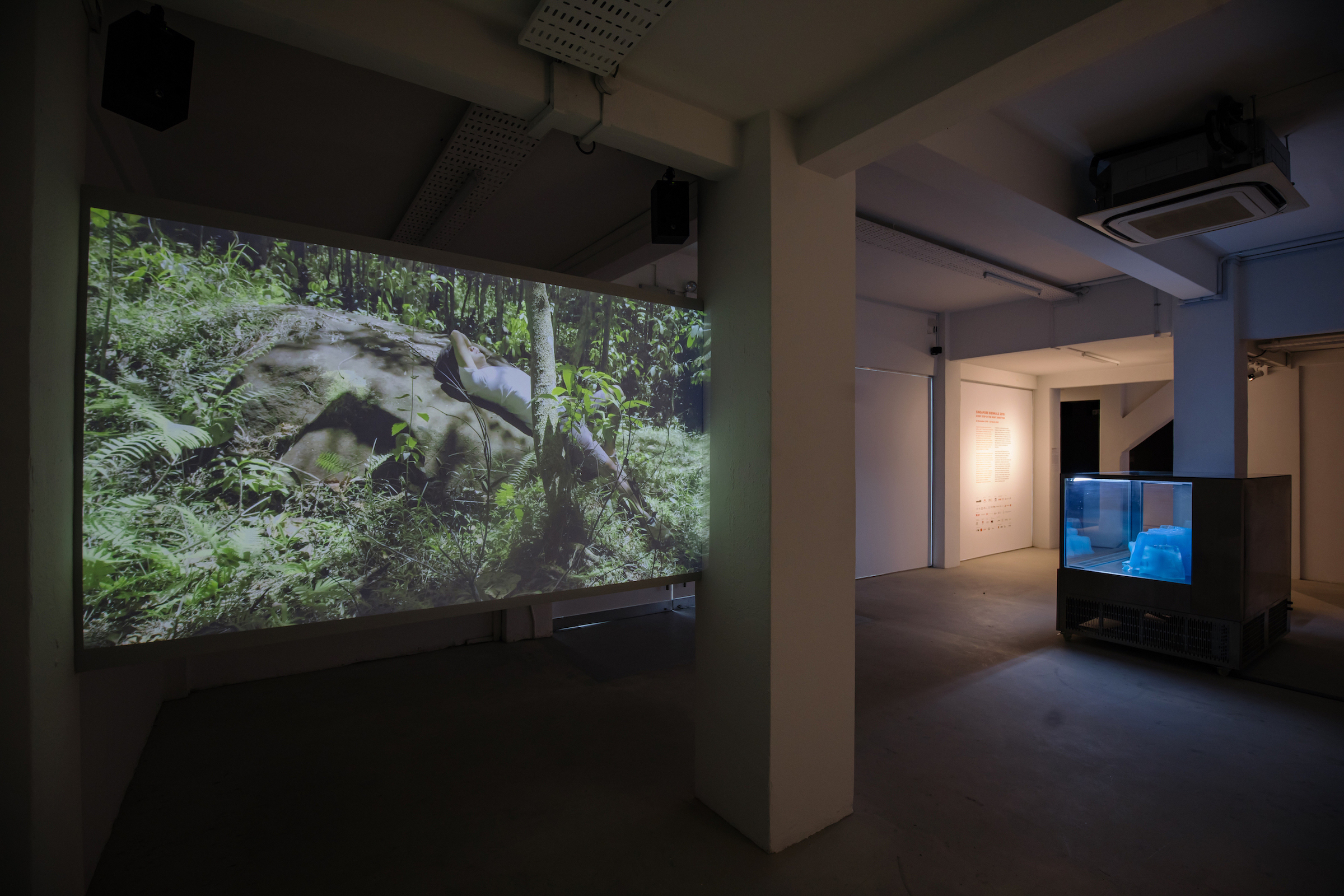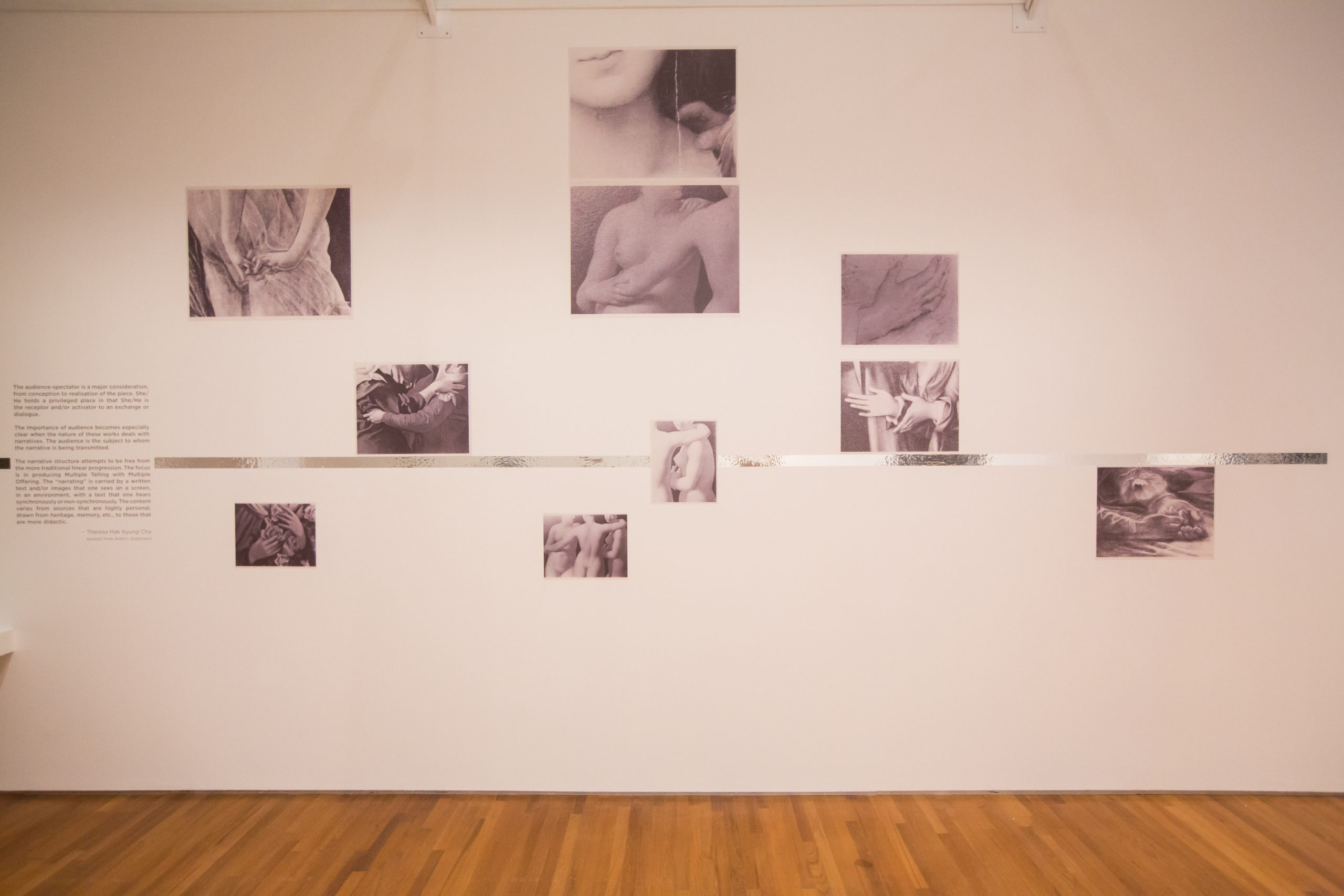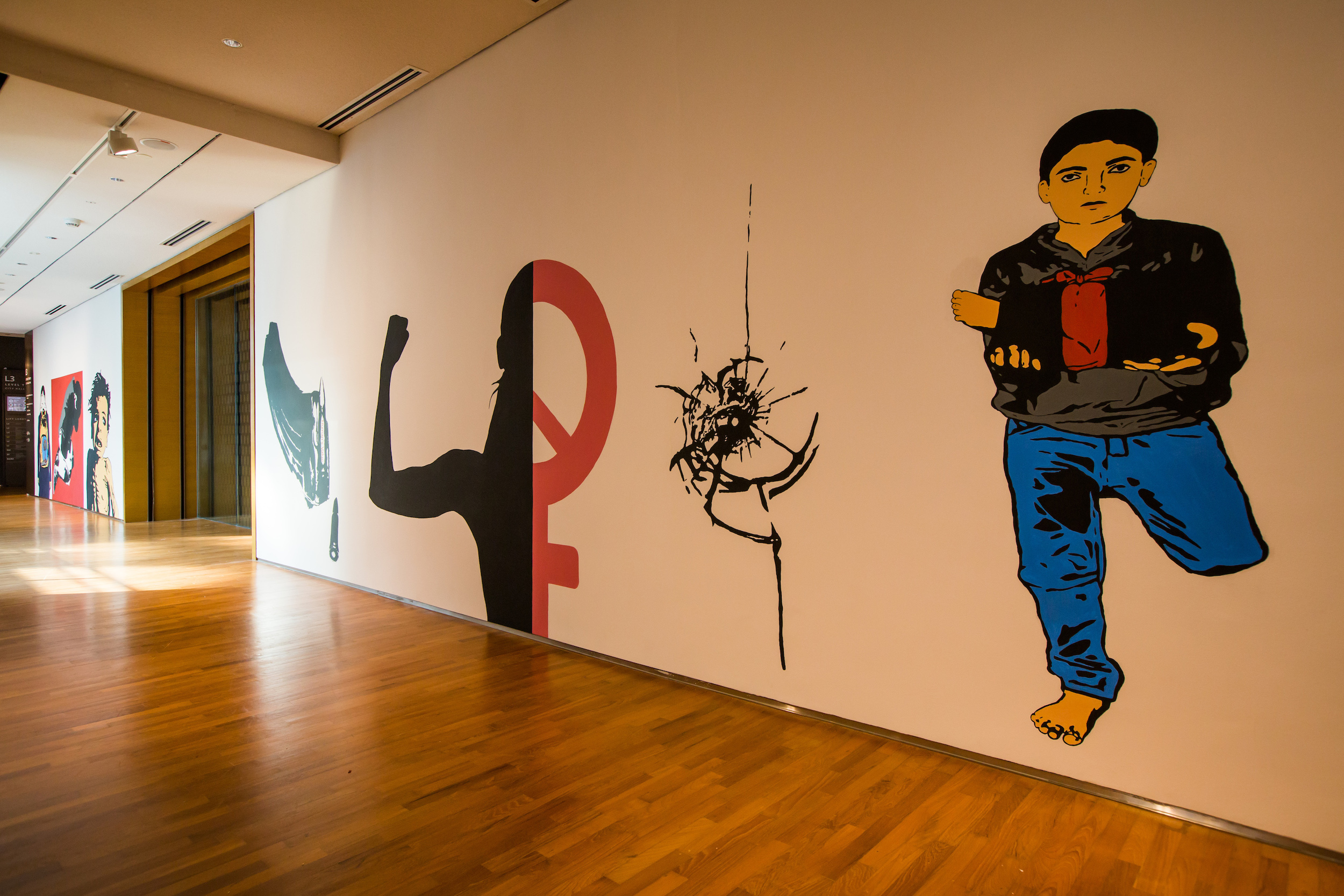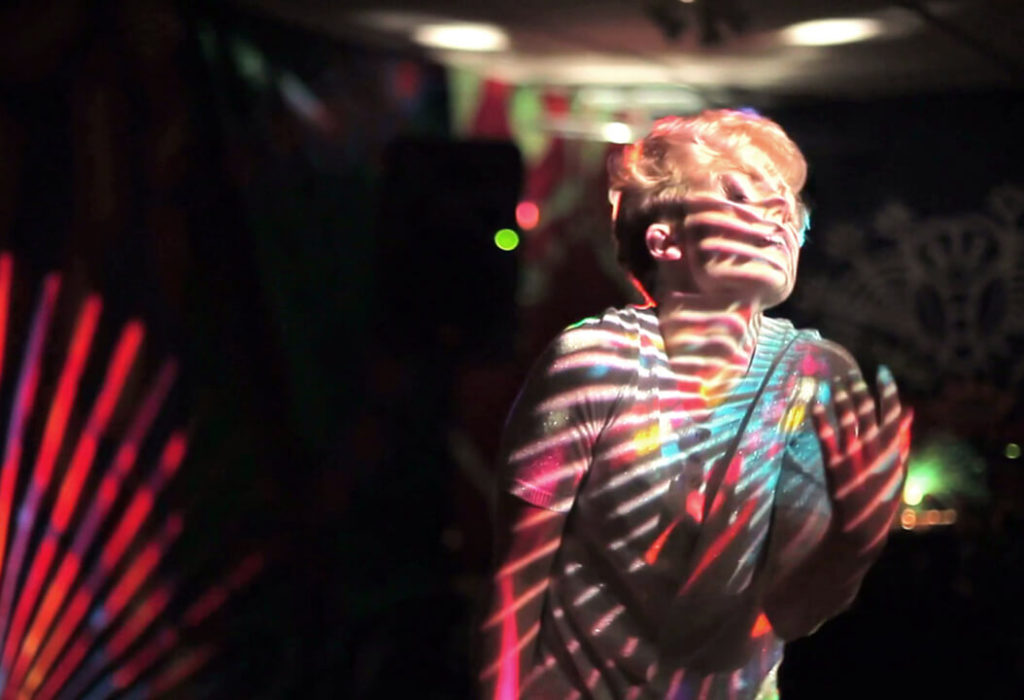Patrick Flores
Every Step in the Right Direction
- 03.12.2020
- EssayCuratingSingaporeTemsüyanger LongkumerAmanda HengHu YunJoseph BeuysRaymundo AlbanoSharon ChinCeline CondorelliBoedi WidjayaAlfonso OssorioCarlos VillaJudy Freya SibayanIsmail ZainHa Bik ChuenTheresa Hak Kyung ChaMin Thein SungC & GMiljohn RupertoBattambang CircusPhareLaurie AndersonHsin-Chien HuangHaifa SubayMarie VoignierSoyung LeePatrick Flores
Carlos Villa, Painted Cloak, 1971–1972. Mixed media. Image courtesy of Singapore Art Museum.
Singapore Biennale 2019: Procedures and Political Inspirations
The biennial is an inherently iterative exhibition form that has now developed something akin to muscle memory. A strain of institutional critique by artists, curators, and critics has evolved alongside the biennial, carving out a place for itself within the biennial edifice. Muscle memory embodies structure in ways that recalls the sociologist Pierre Bourdieu’s notion of habitus as a “structuring structure”1 and the theorist Raymond Williams’s complication of culture as a “structure of feeling.”2
These terms afford solace and counsel as we consider the biennial, for they foreground the irresolute complexity of any project that is simultaneously periodic and perennial, and seeks to defy progressive atrophy or outright obsolescence. Much like the solfeggio in music, the biennial enterprise is governed partly by reflexes, despite the idiosyncrasy underlying both intoned sound and contemporary exhibition forms. One such reflex is the assigning of a biennial theme, which is expected to “capture” the “means of the very thing it is talking about.”3
These are the words that literary theorist Barbara Johnson used when she essayed a definition of “writing” as a task that is an “unclosable loop.”4 After alerting us to the pivotal role of iterability in writing, Johnson turns to the question of structure: “What is at stake in writing is the structure of authority itself,” as writing may be an “instance of the law, the loss of immediacy, or the subversion of the master […] a stance of domination, a space of exile, or the pathway to freedom,”5 individually or in infinite combinations. This push-and-pull, or calculus of writing evinces what Williams intuits as feeling.
Carlos Villa, Painted Cloak, 1971–1972. Mixed media. Image courtesy of Singapore Art Museum.

Sharon Chin, In the Skin of a Tiger: Monument to What We Want (Tugu Kita), 2019. Installation. Image courtesy of Singapore Art Museum.
Sharon Chin, In the Skin of a Tiger: Monument to What We Want (Tugu Kita), 2019. Installation. Image courtesy of Singapore Art Museum.
A theme that seeks to elucidate the imbrications of biennial making is both a burden and a trap. For “biennial making” has become shorthand for the production of a recurring event on either Leviathanian or molecular scales at two-, three-, or five-year intervals. I belabour neither this burden nor this recurrence; I invoke them only to draw attention to the difficulty of transcending the overdetermination that is entailed by the assigning of a theme to a biennial event. From the outset of Singapore Biennale 2019, starting with its title, Every Step in the Right Direction, I attempted to loosen this thematic hold, countering its expectations with an affirmation and a contingency.
In this essay, I revisit the processes and method of thinking through and producing the Singapore Biennale 2019. The political impetus of the Biennale is expressed in its title, which can be traced to Salud Algabre, a militant seamstress who took part in a revolt against the American occupation of the Philippines in the 1930s. This colonial incident historicizes—or better still enlivens—the Biennale, mobilizing a productive exchange steeped in historical comparison. In an interview in the 1960s, a historian asked Algabre where she went after the rebellion was quelled. She was quick to correct him with a statement that may as well be her manifesto: “No uprising fails. Each one is a step in the right direction.”6
Algabre prefigured a theory of resistance grounded in the longue durée of experience and amenable to present and future struggles. The title of the 2019 Biennale bears the grave urgency of its heady origin. However, read in another light today, it amplifies desires that honour the whole reflexive self (every one of my steps) and insists on that self’s participation in a deliberative, painstakingly democratic collective (every one of our steps). As such, the spirit of Every Step in the Right Direction is not reducible to the circumstances of its enunciation, but continues to call for immediate and total freedom from colonialism wherever and whenever it is heard. “Every step” is also a suspenseful protraction, a build-up, and a delay uttered in unhurried assurance. It meshes decidability and the rightful (because ethical and aesthetic) political action needed to tilt (and thus direct) the iterative subject for that (e)very step. The willingness to take the step is fundamental to the labour of hazarding a decision.

Alfonso Ossorio, exhibition view of Congregations, 1958–1990. Mixed media. Image courtesy of Singapore Art Museum.
Alfonso Ossorio, exhibition view of Congregations, 1958–1990. Mixed media. Image courtesy of Singapore Art Museum.
The title thus skirted thematizing the works of the biennial, but instead held out a thesis—or rather a testimony—which, while literally accessible, also denied easy recourse to self-explanation, self-evidence, and self-expression. This alternance between the common and the incommensurate let the works in the Biennale exemplify the ethical imperative of “the right direction.” It also allowed them to generate a full-bodied ecology through the poetic production in and of particular places. This particularity is an extensity: the “Southeast” as a distinct orbit within the vastness of “Asia.” Such a Southeast reaches outward and connects through the Pacific Ocean, the Indian Ocean, and the South China Sea, unmoored from geopolitics and the quaintness of region.
Algabre’s words impart potent conceptualizations of accrual, rightfulness, and direction that must be fleshed out so that they can ripple beyond her milieu, which was world-historical because it was anti-imperialist. Accordingly, I set out to mobilize a practical politics that would realize the promise of Algabre’s will to make a decisive, even if tentative step in a long march or in a slow dragging of feet, under the sign of always already compromised hegemonies.
In Every Step Counts (2019), Amanda Heng encouragepeople to walk with her around Singapore, expressing the Biennale’s desire to crystallize its claim in a Brechtian subject who thinks feelingly and feels thoughtfully—and roams the vicinity of the city-biennial in a feminist rehearsal of flânerie. The ethical and the geo-poetic mingle at this crossroads of feeling and thought, as both artist and stranger wander the streets of Singapore, as if to slow it down and to resist its hypercapitalist acceleration, inducing what scholar Daniel P.S. Goh calls an “arrhythmia” in a nation’s relentless global advance.7
Just as the political and ethical premise of Algabre’s words refuses coloniality without solely aiming for some avant-garde fantasy of rupture—which often leads to orthodoxy, self-righteousness, fatigue, or harrowing slaughter—Heng’s walk is polyvalent. It invites the public to a mindful exercise and the recovery of a history of loss, it enacts an existing postcolonial and neoliberal predicament, and it prefigures a potential through patient agency and the profound yet non-heroic deed of walking with others, free from the self-importance attending contrived epiphanies and togetherness.
Spread across twelve sites, the Singapore Biennale sought to dissolve a perceived monolith and enable the audience to encounter the city as they looked for the Biennale. Different types of spaces were activated, including the white cube of a modern art museum, an art school, a military barracks repurposed into an arts complex, a museum of civilization, and a performing arts centre.

Laurie Anderson and Hsin-Chien Huang, La Camera Insabbiata (The Chalkroom), 2017. Virtual reality installation. Image courtesy of Singapore Art Museum.
Laurie Anderson and Hsin-Chien Huang, La Camera Insabbiata (The Chalkroom), 2017. Virtual reality installation. Image courtesy of Singapore Art Museum.
I was inspired by Algabre’s reply because of both its generous hopefulness and its elusiveness, which can inflect mutual forms of emancipation. I was also drawn to its reconsideration of the meanings of failure and success, and the prospect of error in experiment and invention. This reconsideration dissolves the oft-assumed opposition between affirmation and contingency; it resonates with what we might call “affirmative contingency” in the realm of the aesthetic while it disrupts liberal recognition and revolutionary praxis, and the simplistic dualism between right and wrong, right-wing and left-wing.
I believe in this capacious politics, and I felt that it would be productive in Singapore, a highly regulated island-state that was also commemorating the bicentennial in 2019 of the beginning of British rule. I was intrigued by how Algabre’s anti-colonial revolt would intersect with Singapore’s indebtedness to colonial rule and the resulting modernization and industrialization. I sought a way to curatorially mediate between Singapore, the site of the Biennale, and the economy that makes the Biennale possible, while avoiding bureaucracy-driven exhaustion and the anxiety that pervades such a costly venture. In many ways, the ethical principle of Algabre’s call to action and its possible geo-poetic translation prevented me from limiting the Biennale to an instrumentalizing or aestheticizing “structure of feeling.” Moreover, her creed prompted me to pursue the ethos and the geo-poesis—which is to say, the sensuous particularity—of contemporary art hailing from a specific place and its radical and quotidian historical entanglements.
The title was crucial in conveying the theoretical tone of the Biennale. It instilled thoughtfulness without reiterating a default critique of a ready-made issue or pre-empting judgement with a prefabricated correct position. This is why I stayed away from academic parlance and the catchphrases in vogue on the global curatorial circuit. I wanted an urgent and vernacular title, rooted in local struggle but extensive in its genealogy. I also saw the title as a means to expose—in the sense of laying bare—or to open up the Biennale to a larger lifeworld.
The artist Hu Yun, based in China and Serbia, quietly insinuates an aesthetic of dissipation and a belief in restitution through the work Carving Water, Melting Stones (2019). His starting point is the diorama, which is a device that enlists both structure and representation to reveal a specific world picture. In the 1980s, the Singapore National Museum commissioned woodcarvers from the town of Paete, south of Manila, to produce a series of dioramas depicting the history of Singapore. Hu Yun had earlier researched carving in Paete and was fascinated with the dioramas, which the National Museum has “deaccessioned.” We eventually found them in a local elementary school, where an unassuming museum has been built for them, and where the students guide their peers and other visitors on tours.
To respond to this context, Hu Yun asked a woodcarver from Paete, now working as an ice carver on luxury liners, to sculpt the topography of Singapore in blue ice. In the exhibition, a soundscape of students can be heard around the refrigerated carving; they share their visions of Singapore triggered by the dioramas, released from the official scripts vetted by their teachers. Next to the ice sculpture, Hu Yun’s film follows a carver’s process as he makes a tree branch out of the arm of a religious sculpture in the workshop in Paete and returns it to the forest from which it was secured. Meanwhile, Singapore is melting in its sculpted glacial future.
I designed the Biennale to be both instructive and exciting, a mixture of seminar and festival. I borrowed the festival scheme from the Philippine artist-curator Raymundo Albano, who in the 1980s conceived an Asian contemporary exhibition as a festival, reflecting the instinctive approach to installation in his country, like “childhood urges” instead of systematic aesthetics.8 For him, the installation, the festival, and the contemporary formed a continuum upholding the “Asian” against the “museum” and the “modern.” The spirit of the seminar was Beuysian; its intense intellectual investigation aspired to permanence, much like the persistence of Algabre’s steps. Algabre’s determination and stamina were thus juxtaposed to the alacrity of the renegade Joseph Beuys. Together, they pointed to the performative responsibilities of art and to the volitions of the public.
The trajectory of the 1930s, to which Algabre contributed, was marked by colonial time in Southeast Asia and the encroachment of America on the Pacific. This colonial episode also haunted the bicentennial commemoration of British imperialism in 2019 in the former Malaya and stimulated the emergence of the prototypical modern city state of Singapore. This may stir up what Okwui Enwezor calls the “post-colonial constellation” marked by “transitions to new forms of governmentality and institutionality, new domains of living and belonging as people and citizens, cultures, and communities.”9 Enwezor construes the transitions as permanent, as if to relay the protractedness of Beuys and Algabre. For Nestor García Canclini, the afterlife of the colonial should be reinscribed as part of “modernity and […] subaltern position within the inequalities of the modern world.”10 While the discourse of the decolonial is compelling, I lean on the postcolonial because it simultaneously acknowledges its complicity with the production of the modern and anticipates an indeterminate third moment beyond dialectical critique. This complicity or co-implication proceeds deconstructively insofar as it rigorously challenges structure while inhabiting it intimately, to echo Gayatri Chakravorty Spivak.11

Boedi Widjaja, Black—Hut, Black—Hut, 2019. Installation. Image courtesy of Singapore Art Museum.
Boedi Widjaja, Black—Hut, Black—Hut, 2019. Installation. Image courtesy of Singapore Art Museum.
In the context of the 2019 Biennale, the postcolonial problematic had to restructure the asymmetry of modernity that makes possible an exhibitionary endeavour of this scale. At the National Gallery Singapore, home to the largest collection of modern art in Southeast Asia, I considered the site’s history as a civic space since its erection as the British colonial City Hall. In the atrium, I placed two works that evoke this civic past, now rearticulated and unfolding in another public sphere—that of art—at a museum of modern art, and temporarily and contemporaneously at the Biennale.
Sharon Chin’s work In the Skin of a Tiger: Monument to What We Want (2019) consists of pieces of fabric sourced from political banners from Malaysia’s recent elections, resewn and embroidered with personal and political declarations in public sewing sessions in the national art galleries in Kuala Lumpur and Singapore. The artist configures the reclaimed shapes into a scene resembling a landscape, much like Hu Yun’s melting Singapore sculpture. The work indexed abstraction and foiled the modernisms advanced by the museum. This idiom of abstraction is in dialogue with the other project in the space, Boedi Widjaya’s Black—Hut, Black—Hut (2019), a site-specific proto-structure that references the gap between a dwelling and the ground it is built on in tropical and subtropical vernacular houses constructed on raised platforms, such as the Javanese joglo, the Queenslander house, and the Malay house, as well as the “void deck”12 of public housing in Singapore, an important communal space now threatened by gentrification. Key to the work is its humidity-sensitive salt-infused concrete surface, which, as the salt disperses over time, comes to imply both ornamentation and carapace.
These two projects at the National Gallery Singapore recast abstraction as a vehicle for convergence and a technique to confer intimacy on the museum’s formidable architecture and its much-vaunted “soft power.” In this sense, abstraction is registered as a stylistic cipher and a phase of philosophical elaboration. It is at this conjuncture that the 1930s of Algabre would meet the heady insurgency of the 1970s.
Two artists critically involved in abstraction supplemented the argument of Sharon Chin and Boedi Widjaya. The Congregations series by Alfonso Ossorio was central to my curatorial rationale for the Biennale. Made in the 1950s and 1960s, these dense and intricate assemblages fascinate with their accumulations of species and substances, from shells, carapaces, and antlers to skulls, teeth, eyeballs, mirrors, and more. Looking at Ossorio’s works, one is hard put to distinguish the materials he ingeniously used to create constellations of things that sketch out an image of mangroves or a microcosmos. He thought of his baroque forms not so much as accumulations but as a continuity, or even a “faithful.” As Ossorio puts it in an interview conducted by Forrest Selvig: “They all work together. Either the bone disintegrates or it’s fused into the picture. It’s a step in the continuity. It’s not dead, it’s continuing.”13
This idea of a congregation spoke to the work of the Biennale: to gather the familiar and the eccentric in a shared space, a common ground where the public may deliberate upon the difficulties of difference or particularities. However, shipping the works from New York was tricky. Some pieces proved impervious to the genomic analysis required to obtain a certificate for travel of organic substances. In the end, we were able to present only three works. It may well be that the material of Ossorio’s art is the entire world itself, across which mobility is restricted because the planet and its peoples are themselves desiccated and wearied, if not outright imperilled. The situation thus demystified the imaginary of a borderless world, reminding us that the movement of living matter and species, from viruses to endangered flora and fauna, may end up compromising the world which art supposedly represents.
In his work, Ossorio compulsively mustered numerous disparate possessions, which mark the ground with frenzied obsession and exceptionally tactile plasticity. He was an avid early collector of Jean Dubuffet and Jackson Pollock, as well as of conifers for his estate and arboretum in upstate New York. As such, both his artistic practice and his collecting proclivities elaborated, if not “queered,” the language of Abstract Expressionism. Yet, being gay, Philippines-born, wealthy, and erudite scripted him out of the largely masculine late-modern canon.
Relieving Ossorio’s hoard at the Singapore Biennale were gestures that suggested the more aleatory abstraction of “leavings,” of remaining in a place or departing. Theresa Hak Kyung Cha’s spectral voice and fragments of extremities in premodern European art, Min Thein Sung’s luminous dust from Yangon, Temsüyanger Longkumer’s pins on mutating earthenware, and C & G’s ludic elicitation of a ghost were by turns melancholy and forensic, disclosing evidence of a deep loss of vitality and a longing for uneasy presence.

Carlos Villa, survey of works (1967–2006) presented in Singapore Biennale 2019. Collection of Carlos Villa Estate. Image courtesy of Singapore Art Museum.
Carlos Villa, survey of works (1967–2006) presented in Singapore Biennale 2019. Collection of Carlos Villa Estate. Image courtesy of Singapore Art Museum.
Standing at the entrance of the main hall of the Biennale at the National Gallery Singapore, the work of the Filipino-American artist Carlos Villa asserted this engagement, between loss and longing, with modernity. I wanted to begin with a story of immigration. From the late 1960s onward, Villa—a teacher, activist, firebrand, and organizer—laboured through the crisis of identity in an America grappling with systemic racism, even as it envisaged a multicultural society and yearned for a “perfect union.” He produced two seminal events: Other Sources: An American Essay (1976) and Worlds in Collision (1989). Combining music, food, performance, and conversations, Other Sources was also an exhibition and a gathering of dissidents of sundry allegiances; Worlds in Collision adopted a syllabus-participatory form, becoming a kind of “action” in which “presentations in the lecture hall were interspersed not only with poetry, music, and meals, but also a successful spatial fluidity was established between formal and informal gatherings.”14
In his artistic practice, Villa, like Ossorio, combined substances such as semen and blood with feathers and linked California and the Philippines to the vast Pacific lifeworld. With the queer Ossorio, the migrant Villa, and the insurrectionist Algabre, the trope of the “Philippine” ceases to pertain merely to a province, and becomes instead a mode of world making in which “art” is an archipelagic allusion, not a spectacle of unyielding continents.
To fill out the perambulatory strategy of the Biennale, I collaborated with various other organizations, including a group that works with migrants and provides tours of the red-light district, two museums, two theatre organizations invested in Asian and Brechtian methods, a cinematheque, and a library. Called “Coordinates,” this node in the Biennale meshwork was equivalent to the exhibition program. It sought to widen the scope of the Biennale by co-producing with initiatives on the ground that had nurtured sustainable opportunities for conviviality over many years. However, I did not want to simply assimilate them into the tissue of the Biennale, but strove to retain their cellular nature as part of the metabolism of our socius. Alongside these initiatives of the Coordinates section were the grassroots, post-genocide circus Phare; the routines of balance, grace, and risk of the Battambang Circus from Cambodia, lending an air of homespun optimism; the vertiginous virtual-reality work of Laurie Anderson and Hsin-Chien Huang, transporting participants into the vortex of memory; and the heartfelt street art on merciless violence of Haifa Subay from Yemen.
In short, the Singapore Biennale 2019 was interested in the ethical promise of instructiveness and mindfulness, of knowing what is right for a place. One way in which the pedagogical impulse was concretized was by the design of an ambience through furniture. Celine Condorelli’s loungers, called Spatial Composition 13, presented the materials from the archives of artists and artist-curators Raymundo Albano and Judy Freya Sibayan from Manila, Carlos Villa from San Francisco, Ismail Zain from Kuala Lumpur, and Ha Bik Chuen from Hong Kong. Condorelli explains:
This is directly addressed to an audience, a public, and a form of sociality, by placing people in relation to each other—whether the chairs are occupied or not, they suggest intimacy. This seating is to also carry newspapers, therefore acting like reading stations, resting areas, punctuations through the exhibition. I was driven by an idea of leisure—as I’m offering reading newspapers on a deckchair—that permeates public culture both historically and structurally. […] Also it functions as a supplement to the whole exhibition—a set of slightly ambiguous objects between artwork and exhibition infrastructure.15
Like Condorelli’s Spatial Composition 13, the Biennale itself was both a supplement and a structure of relational persuasion.
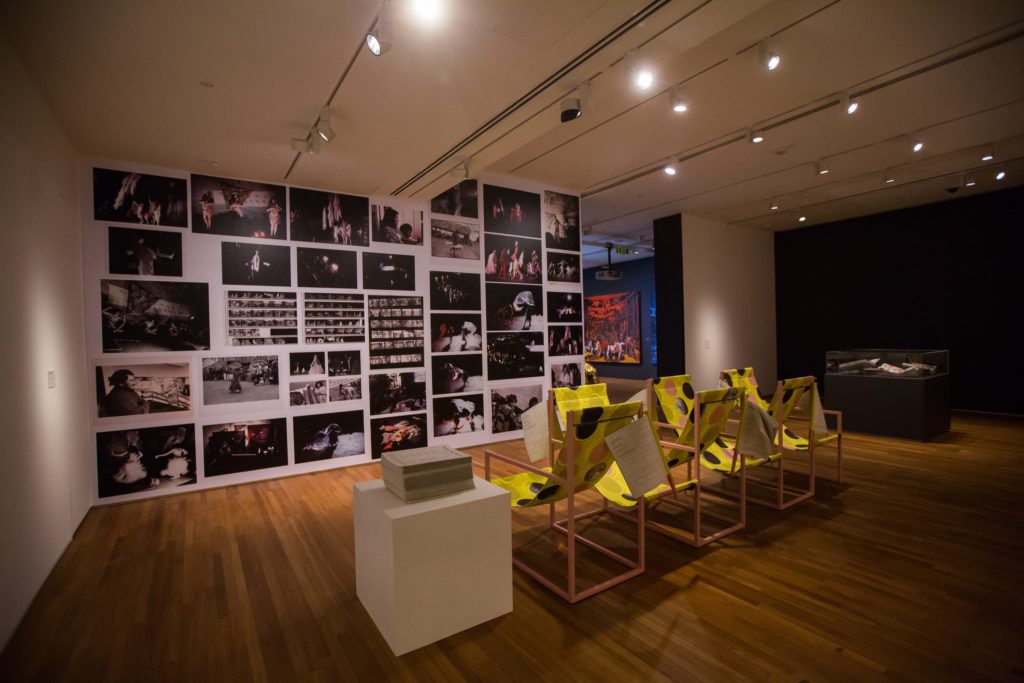
Celine Condorelli, Spatial Composition 13, 2019. Installation. Image courtesy of Singapore Art Museum.
Celine Condorelli, Spatial Composition 13, 2019. Installation. Image courtesy of Singapore Art Museum.
Another aspect of the pedagogical orientation of the Biennale was the decision to share the curatorial prerogative with six young curators working in Asia. This served to create an dialogue across generations and different curatorial approaches. I chose curators who were suspicious of international contemporary art, the spectacularization and politics of disagreement, and the self-aggrandizements of peripatetic artists and their propensity to signal criticality towards the biennial enterprise even as they find a berth within it.

Marie Voignier, Na China, 2019. Video installation. Image courtesy of Singapore Art Museum.
Marie Voignier, Na China, 2019. Video installation. Image courtesy of Singapore Art Museum.
Halfway through its run, the Biennale was cut short by the global health crisis of the Covid-19 pandemic. The decision to end it early was made when there was an outbreak in the dormitories of migrant workers in Singapore. Ossorio had foretold this condition of “intensive multiplicity,” marginality, and confinement in his Congregations. The parables that might be found in this turn of events and of the world it conjures were also sown in other works in the Biennale’s seminar-festival structure, such as the African merchant-women in China in Marie Voignier’s documentary, the story of a species and the spawning of a cityscape in Soyung Lee’s installation, and the feverish sweep of a pathogenic fungus across the desert and suburbia in Miljohn Ruperto’s chamber of geomancy. The Singapore Biennale 2019 would further, in fear and trembling, every step of redemption and a certain direction of prophecy.

Miljohn Ruperto, Geomancies, 2007–2017. Installation. Image courtesy of Singapore Art Museum.
Miljohn Ruperto, Geomancies, 2007–2017. Installation. Image courtesy of Singapore Art Museum.
NOTES
1 See Pierre Bourdieu, Outline of a Theory of Practice, trans. Richard R. Nice (Cambridge: Cambridge University Press, 1977), 72–95.
2 See Raymond Williams, Marxism and Literature (Oxford: Oxford University Press, 1977), 128–135.
3 Barbara Johnson, “Writing,” in Critical Terms for Literary Study, 2nd ed., ed. Frank Lentricchia and Thomas McLaughlin (Chicago: University of Chicago Press, 1995), 39.
4 Ibid.
5 Ibid., 48.
6 David R. Sturtevant, “‘No Uprising Fails—Each One Is a Step in the Right Direction…’,” Solidarity, October–December 1966, 19.
7 Daniel P.S. Goh, “Walking the Global City: The Politics of Rhythm and Memory in Singapore,” Space and Culture 17, no. 1 (2014): 26.
8 Raymundo Albano, “Installation: A Case for Hangings,” in Raymundo Albano: Texts, ed. Patrick D. Flores (Quezon City: The Philippine Contemporary Art Network, 2017), 17.
9 Okwui Enwezor, “The Postcolonial Constellation: Contemporary Art in a State of Permanent Transition,” in Antinomies of Art and Culture: Modernity, Postmodernity, Contemporaneity, ed. Terry Smith, Okwui Enwezor, and Nancy Condee (Durham: Duke University Press, 2008), 208.
10 Nestor García Canclini, Imagined Globalization, trans. George Yudicé (Durham: Duke University Press, 1999), 52.
11 Gayatri Chakravorty Spivak, A Critique of Postcolonial Reason: Toward a History of the Vanishing Present (Cambridge, MA: Harvard University Press, 1999), 191.
12 Found at the foot of public-housing blocks, the void deck is an open space which often serves as the main communal space.
13 Oral history interview with Alfonso Ossorio, 19 November 1968, Archives of American Art, Smithsonian Institution, https://www.aaa.si.edu/collections/interviews/oral-history-interview-alfonso-ossorio-5517.
14 Moira Roth, “Villa’s Worlds in Collision: A Study in Four Parts, 1967–2007,” in Carlos Villa and the Integrity of Spaces, ed. Theodore S. Gonzales (San Francisco: Meritage Press, 2011), 41.
15 Celine Condorelli, quoted in Patrick D. Flores, “To Structure, Supportively,” Art Monthly Australasia, November 2019, 35.
ABOUT THE AUTHOR
Patrick Flores is Professor of Art Studies in the Department of Art Studies at the University of the Philippines and Curator of the Jorge B. Vargas Museum in Manila. He is also the director of the Philippine Contemporary Art Network. He was a visiting fellow at the National Gallery of Art in Washington, D.C. in 1999, an Asian Public Intellectuals Fellow in 2004, and a guest scholar at the Getty Research Institute in Los Angeles in 2014.
His publications include Painting History: Revisions in Philippine Colonial Art (1999), Remarkable Collection: Art, History, and the National Museum (2006), and Past Peripheral: Curation in Southeast Asia (2008). He was one of the curators of Under Construction: New Dimensions in Asian Art in 2000 and Position Papers for the 7th Gwangju Biennale in 2008.
He curated the Philippine Pavilion at the Venice Biennale in 2015. He was the artistic director of Singapore Biennale 2019 and is the curator of the Taiwan Pavilion for Venice Biennale in 2022.


